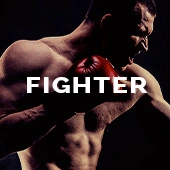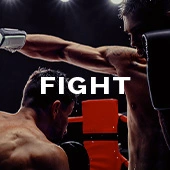The names Akani Simbine, Lamont Marcell Jacobs and Letsile Tebogo almost assuredly mean nothing to you. But a few hundredths of a second after Noah Lyles and Kishane Thompson completed the Olympic men’s 100-meter race in a photo finish that captivated the sports world in the summer of 2024, those three men crossed the line in fourth, fifth and sixth place, respectively, proving themselves three of the most remarkable athletes on the planet – and going home with no medals to show for it.
At least bronze medalist Fred Kerley gets to be the answer to a trivia question. Simbine, Jacobs and Tebogo don’t even have that.
That’s the way it goes. I’m not sure I subscribe to Ricky Bobby’s dad’s life philosophy that “if you ain’t first, you’re last,” but it’s true that our culture is obsessed with debate over who belongs at the very top of lists, and we pour a lot less energy into figuring out how to rank the guys who just missed the medal podium.
See, for example in boxing, most of the conversation over the last couple of years regarding the pound-for-pound list.
Not that people don’t care about the lower reaches of the top 10. But they don’t care about it nearly as much as they do making their case for Terence Crawford, Oleksandr Usky or Naoya Inoue as the P4P king.
And that’s understandable, given what a fascinating debate there is to be had over the Crawford-Usyk-Inoue triangle. Arguments like this are why sports radio was invented.
A funny thing happened, though, this past Saturday in Riyadh.
Not necessarily by design, but rather by happenstance and by virtue of a trio of eye-opening performances, that other 70% of the pound-for-pound top 10 became, in its own way, every bit as compelling to discuss as what to do with the top three spots.
In back-to-back-to-back fights, following Abdullah Mason’s entertaining win over Sam Noakes in which he offered glimpses of a possible future pound-for-pounder, fight fans were treated to Jesse “Bam” Rodriguez at his most divine, Devin Haney at his most defiant and David Benavidez at his most destructive. And all three warrant consideration to move up on P4P lists.
We should start, though, with a glimpse at what some of the more credible lists looked like heading into the weekend.
The Transnational Boxing Rankings Board (TBRB) and ESPN.com both had Crawford, then Usyk, then Inoue for the top three – though recency bias seems to rule this debate, with the top dog sometimes being whoever fought last.
Both lists had Dmitry Bivol fourth, Rodriguez fifth and Artur Beterbiev sixth.
ESPN then went Shakur Stevenson, Benavidez, Junto Nakatani and Saul “Canelo” Alvarez, in that order. TBRB went with Nakatani, Alvarez, Teofimo Lopez and Stevenson.
Those 4-10 rankings weren’t straightforward a few days ago. And they only got more complicated with Saturday’s results.
Rodriguez is a marvel. The 25-year-old San Antonio southpaw has, as best I can tell, about as unanimous an approval rating among boxing aficionados as exists in the sport. He cleaned out nearly the entire previous generation of flyweight and junior bantam elites – Juan Francisco Estrada, Carlos Cuadras, Srisaket Sor Rungvisai – and has now just about done likewise with the best of the current generation.
Rodriguez initiated the rapid downfall of Sunny Edwards in 2023, and over the weekend in Saudi Arabia, he utterly dismantled the undefeated and well-regarded Fernando “Puma” Martinez.
Whether you fix your eyes on his fists or his feet, you’ll be spellbound by Bam. And that’s not something you can say about many fighters.
So where does he fit in pound-for-pound? Somewhere between fourth and sixth, along with light heavyweights Bivol and Beterbiev, who proved nearly even with each other – slight edge ultimately to Bivol – over the course of two bouts.
But what is currently a legit debate over how to rank that trio (although Bivol’s name needing to be higher than Beterbiev’s isn’t all that debatable) seems destined not to last long. Given his youth and constant improvement, Rodriguez is the lone member of the current four-to-six P4P group likely to crack the top three in the near future – and perhaps someday stand as the No. 1 fighter in the whole sport.
Benavidez, meanwhile, took care of business against Anthony Yarde in a way that was simultaneously expected and exceptional. I already had “The Mexican Monster” in my top 10 coming into the fight, but not everyone did (see TBRB’s rankings). It’s increasingly difficult to exclude him now, and there’s a serious case for him in the seventh spot – or maybe even the sixth, if you don’t care for Beterbiev’s inactivity (hasn’t fought since February and has nothing scheduled) and age (40).
Not that many people expected Yarde to win, or even to come close, but there was something about the escalating violence of Benavidez’s performance that resounded even if it wasn’t a surprise. He took a few rounds to get going (winning even those rounds in which he was still figuring things out, mind you). Then he became the proverbial boulder rolling downhill. By the seventh, referee Hector Afu rescued Yarde in the truest sense of that word.
How do you compare Benavidez pound-for-pound to Bivol and Beterbiev when he’s in the same weight division as they are, but neither seems to want to acknowledge his presence? Harder still, how do you compare Benavidez pound-for-pound to lightweight Stevenson, who’s brilliant in ways that have almost no overlap whatsoever with Benavidez’s brilliance?
I’ll tell you one fighter on P4P lists I don’t struggle comparing Benavidez to: Alvarez. At a certain point, it becomes nearly impossible to rank the hider above the seeker.
Then there’s the other victor on Saturday’s PPV card from Riyadh, the one with the trickiest pound-for-pound case: Haney.
The man Haney defeated, Brian Norman Jnr, was more highly regarded than anyone else who took a loss on this card. Or, at the very least, Norman had the most momentum. The oddsmakers made Haney-Norman a true pick’em, -110 in each direction, when the opening bell rang.
And what did Haney do? He floored the puncher. He out-hooked the hooker. He put his forceful jab and his quick-trigger reflexes and his versatile boxing skill set on full display and won with room to spare (never mind the silly 114-113 scorecard of Mike Fitzgerald). And most importantly, he demonstrated a willingness for combat some suspected had evaporated.
He looked good enough, while presenting a frustrating enough style for comparatively one-dimensional fighters, that Conor Benn nearly ran out of ways during a post-fight interview segment to announce “anyone but Haney” without flatly saying the words “anyone but Haney.”
In handing Norman his first loss, Haney remained undefeated – even if it’s a bit unnatural to think of him that way. No, I’m not talking about his controversial decision win over Vasiliy Lomachenko (though I do believe the judges got that wrong). I’m talking about Haney’s April 2024 no-contest against Ryan Garcia.
Officially, in the record books, nobody won or lost that fight. It’s like it didn’t happen. But it’s no easy task ignoring it. It’s like being on a jury, absorbing a damning bit of testimony, then hearing the words “objection” and “sustained” and being told to ignore that testimony when it’s time to reach your decision.
Can you properly judge the pound-for-pound worthiness of Haney when you saw him hit the deck three times against Garcia and endure what seemed a potential career-shortening beating?
The correct thing to do is to acknowledge how much Garcia’s multiple unfair advantages – missing weight and using PEDs – made all of that possible, and strike that fight from the record. But it’s not easy to do. We all saw what we saw.
Still, remove that “loss,” as the official recordkeepers have, and Haney is an undefeated three-division titlist (including the lineal championship at lightweight) who has topped Jorge Linares, Regis Prograis, Joseph Diaz, George Kambosos, Jose Ramirez, Lomachenko (at least officially) and now Norman. There’s not a lot separating that resume from that of Nakatani or Stevenson or Benavidez.
Nobody was thinking about placing Haney in their P4P top 10 coming off his dreadful (but dominant) win over a badly faded Ramirez. But one win later – one win that suggests he may be all the way back from whatever happened against Garcia – Haney has to be considered.
Saturday’s wins for Rodriguez, Benavidez and Haney – three marketable American fighters in their 20s – shook up the pound-for-pound conversation in numerous ways. In numerous positive ways, I should emphasize. These wins added layers and depth to the P4P conversation.
When it comes to pound-for-pound, yes, first place still matters most. But if you ain’t first, you ain’t necessarily last. If you’re anywhere in this top 10, you’re some kind of special fighter, and there’s room for all sorts of lively debate about where you stand – and how much closer to the pole position you can still slingshot yourself.
Eric Raskin is a veteran boxing journalist with nearly 30 years of experience covering the sport for such outlets as BoxingScene, ESPN, Grantland, Playboy, and The Ring (where he served as managing editor for seven years). He also co-hosted The HBO Boxing Podcast, Showtime Boxing with Raskin & Mulvaney, The Interim Champion Boxing Podcast with Raskin & Mulvaney, and Ring Theory. He has won three first-place writing awards from the BWAA, for his work with The Ring, Grantland, and HBO. Outside boxing, he is the senior editor of CasinoReports and the author of 2014’s The Moneymaker Effect. He can be reached on X, BlueSky, or LinkedIn, or via email at RaskinBoxing@yahoo.com.



